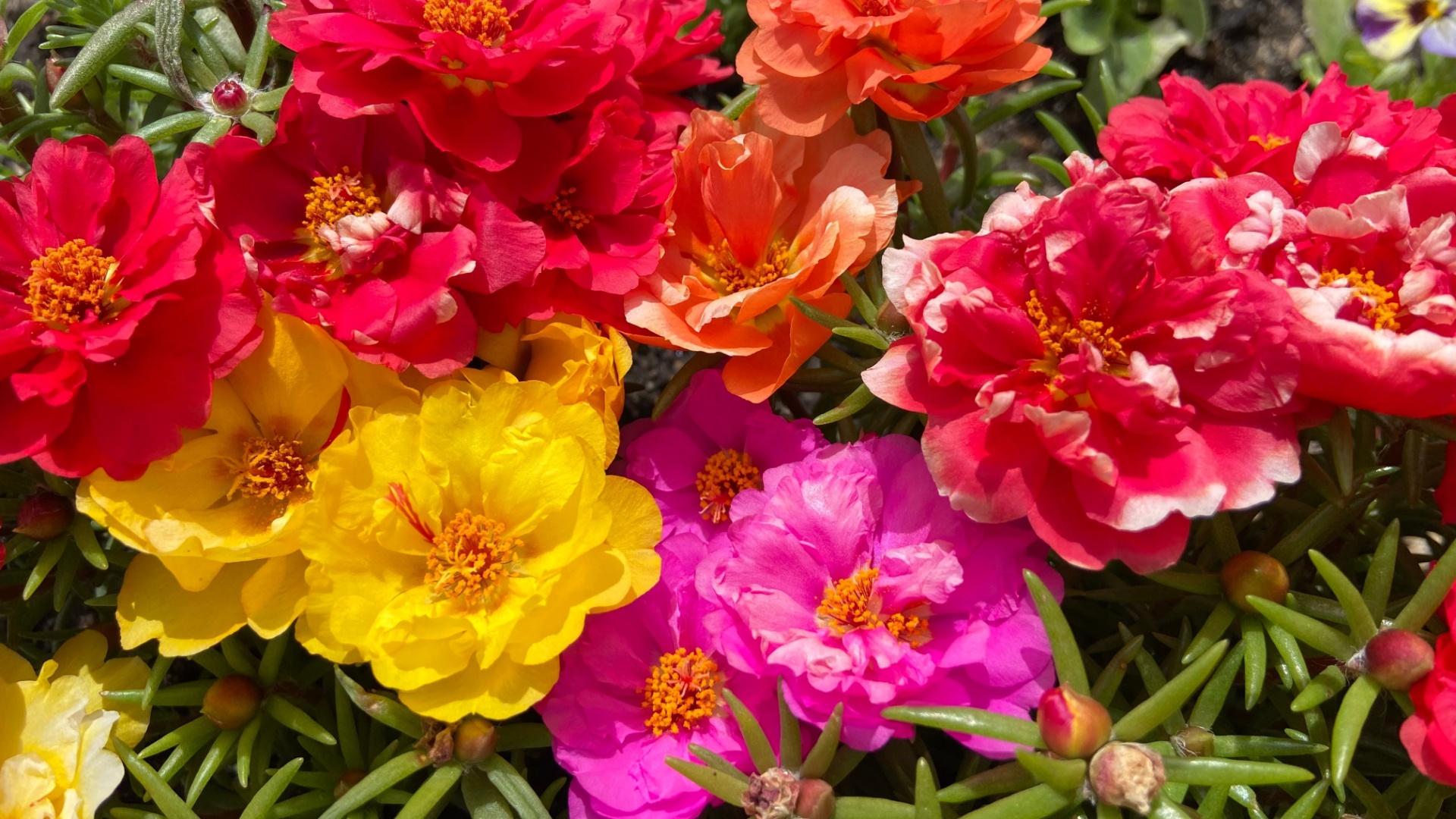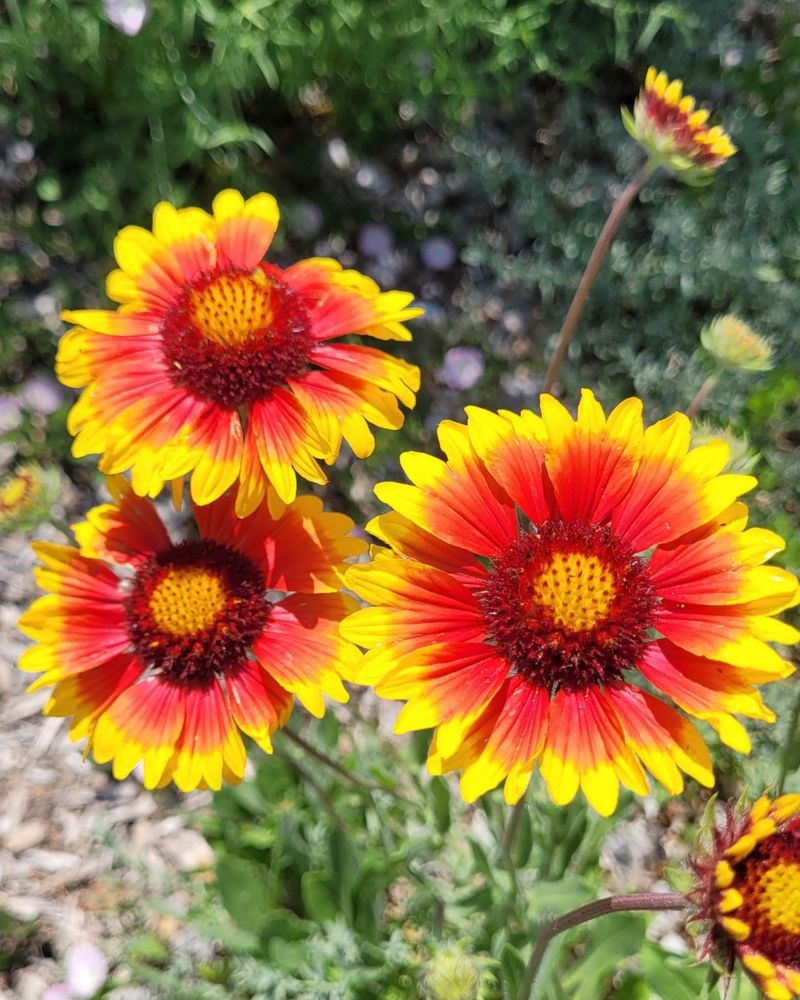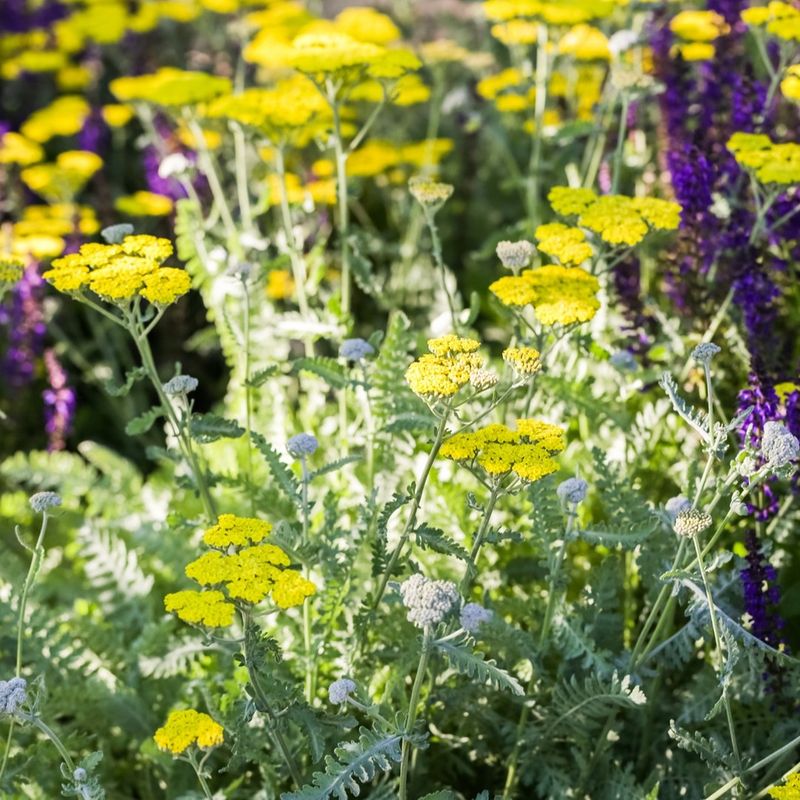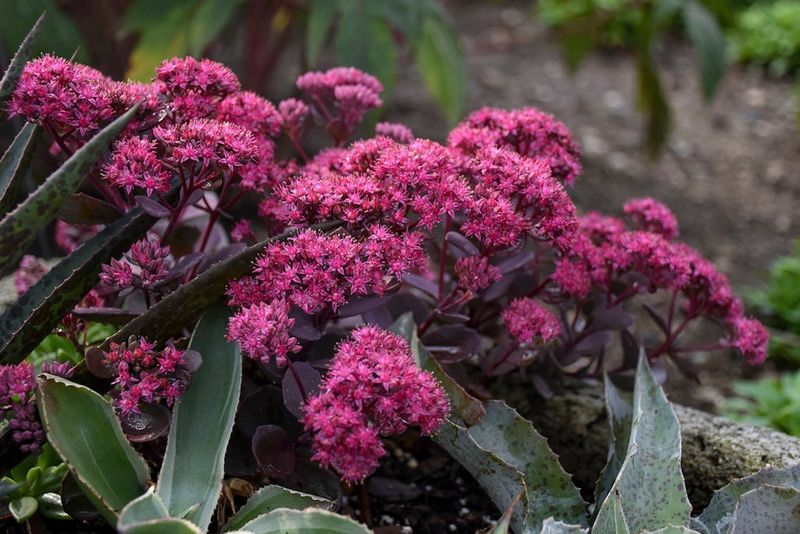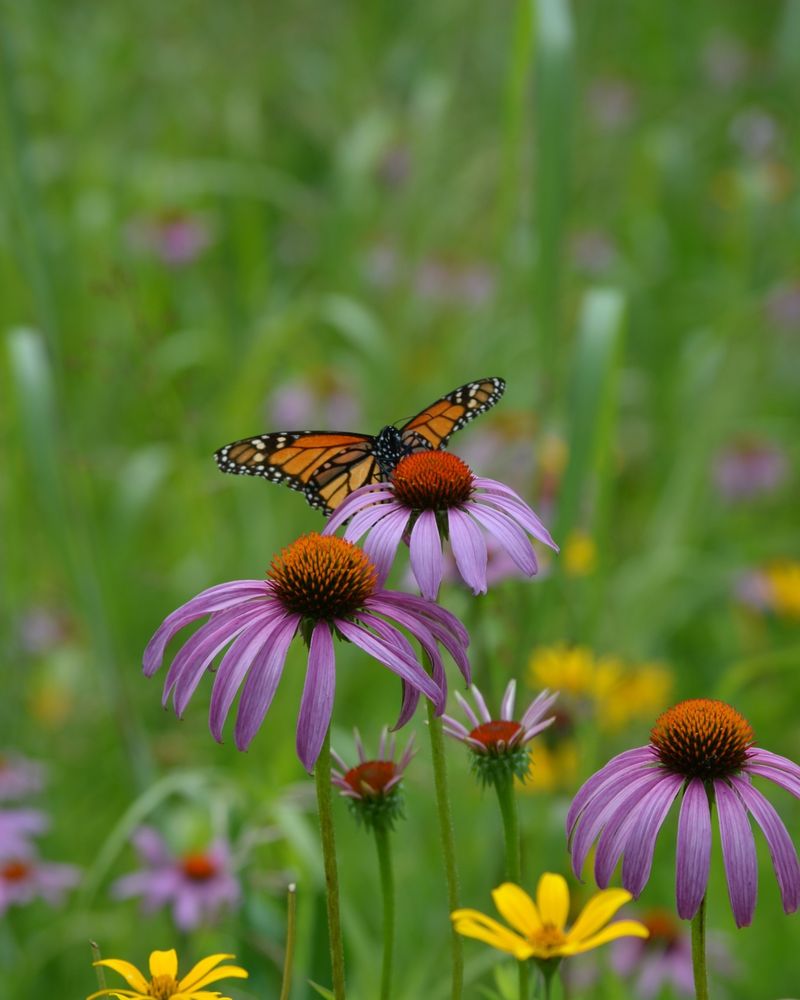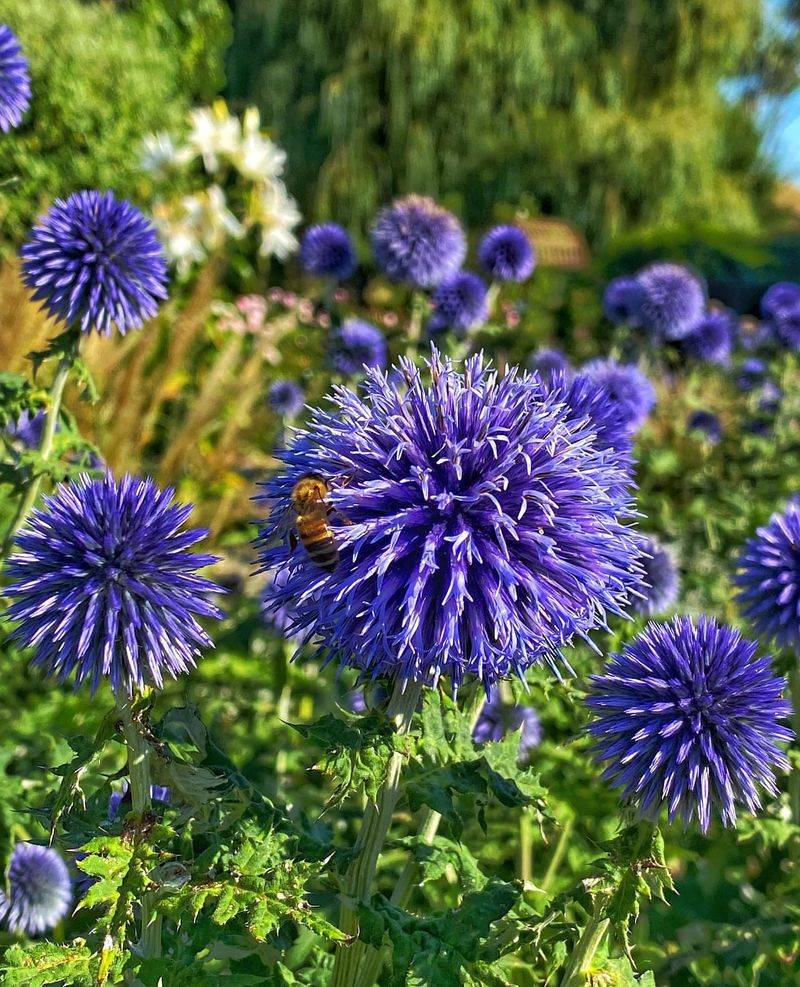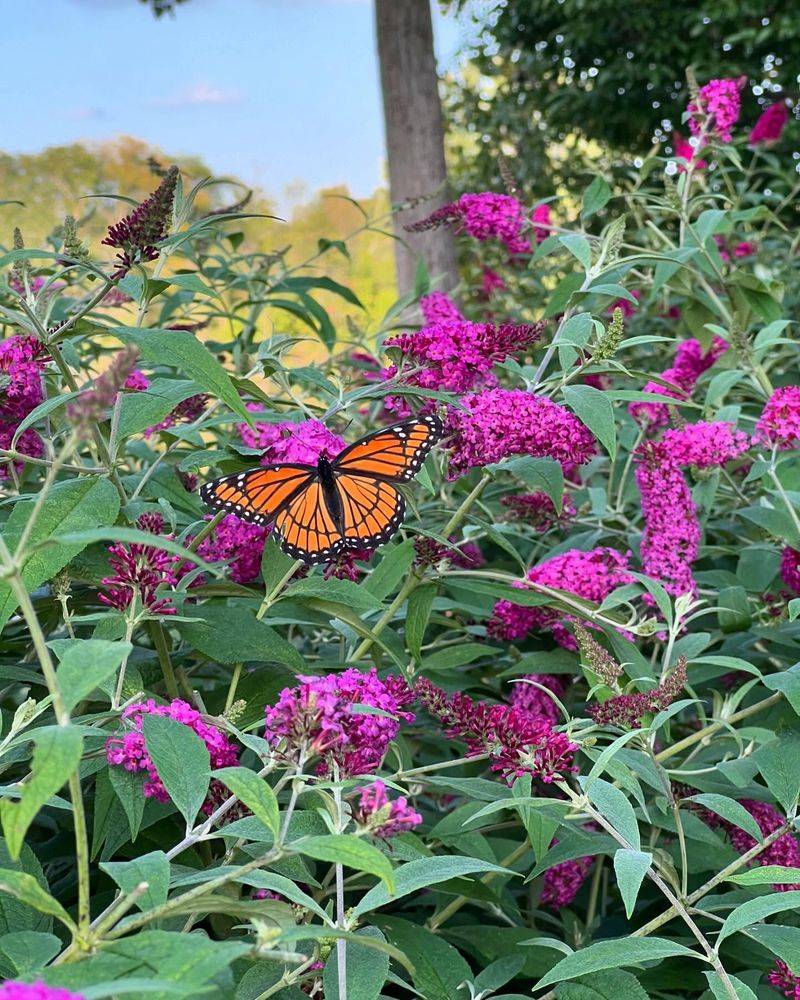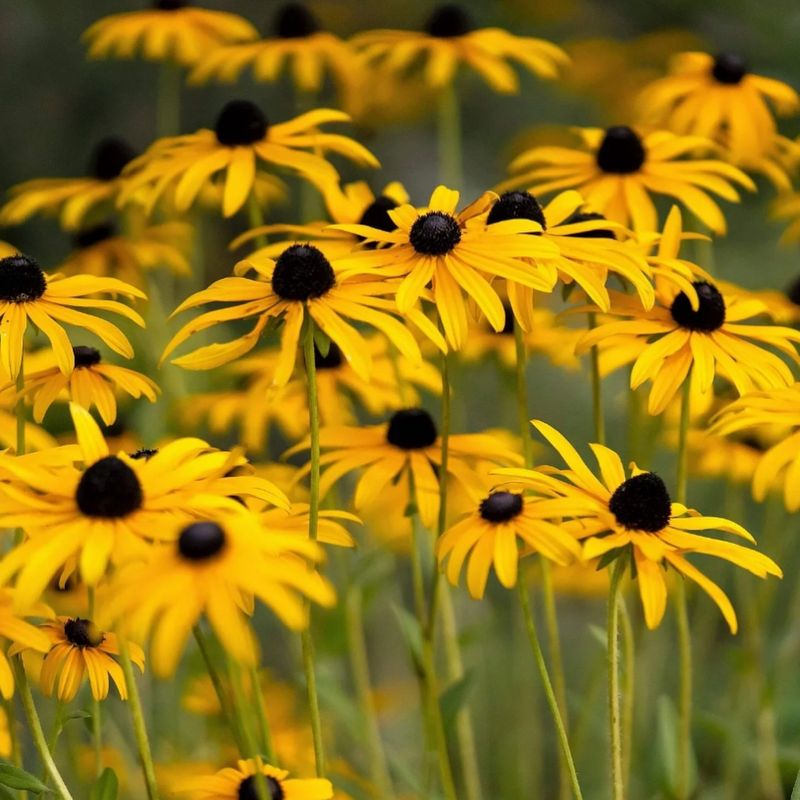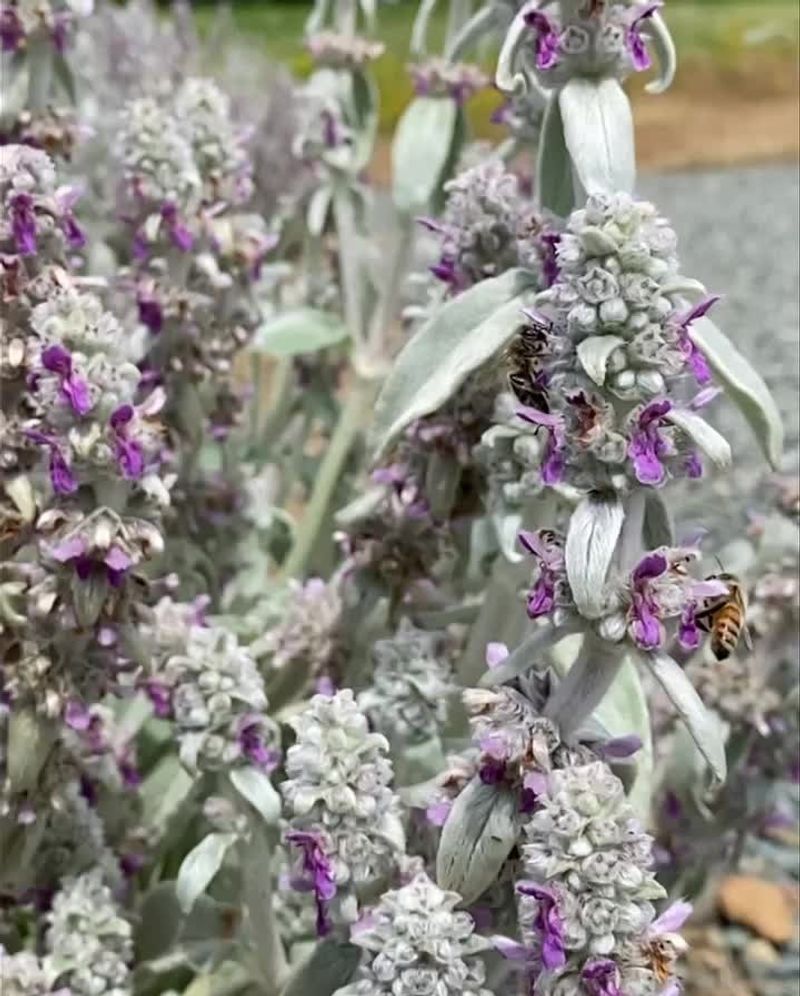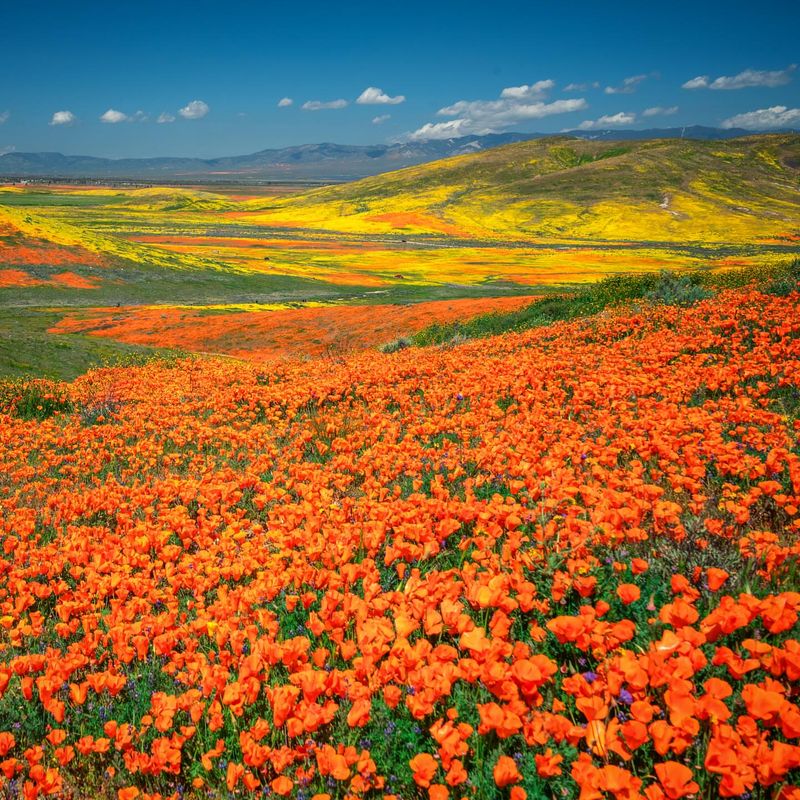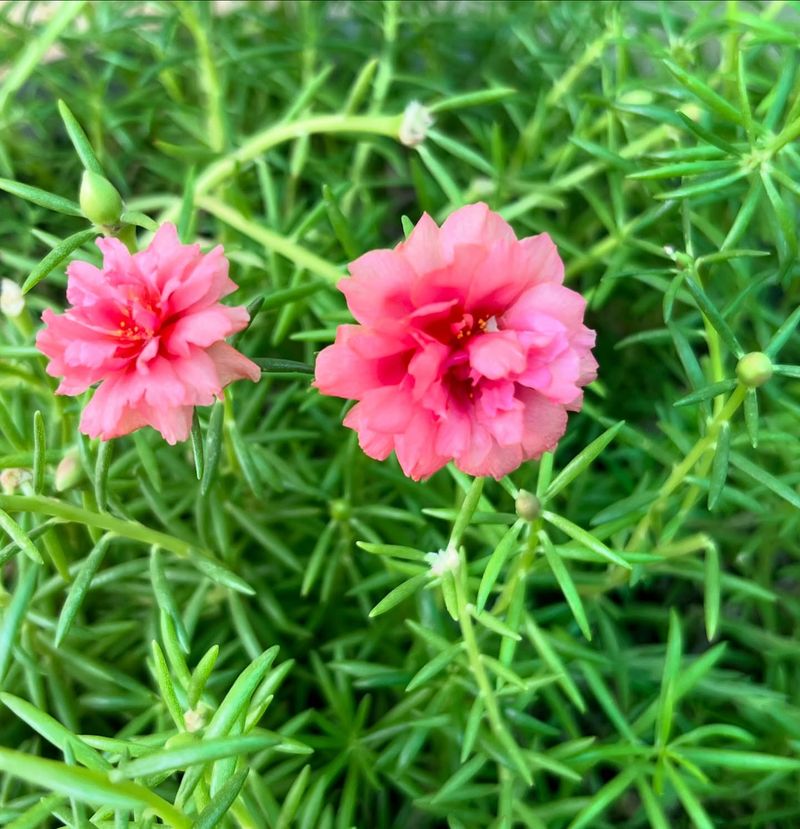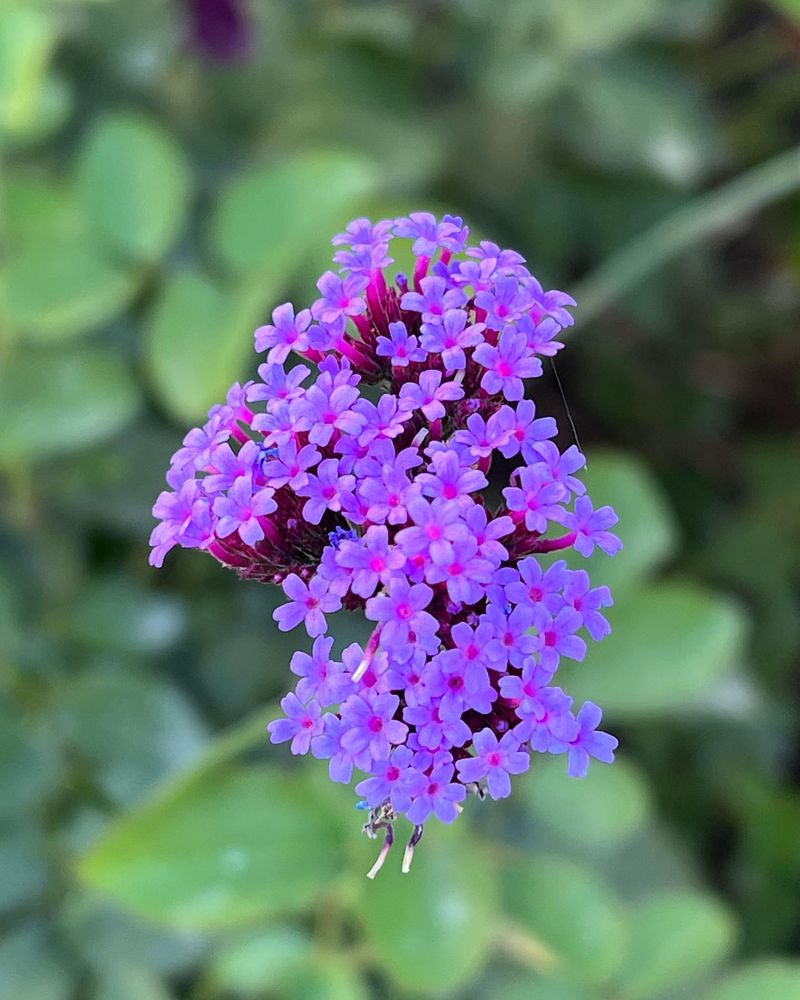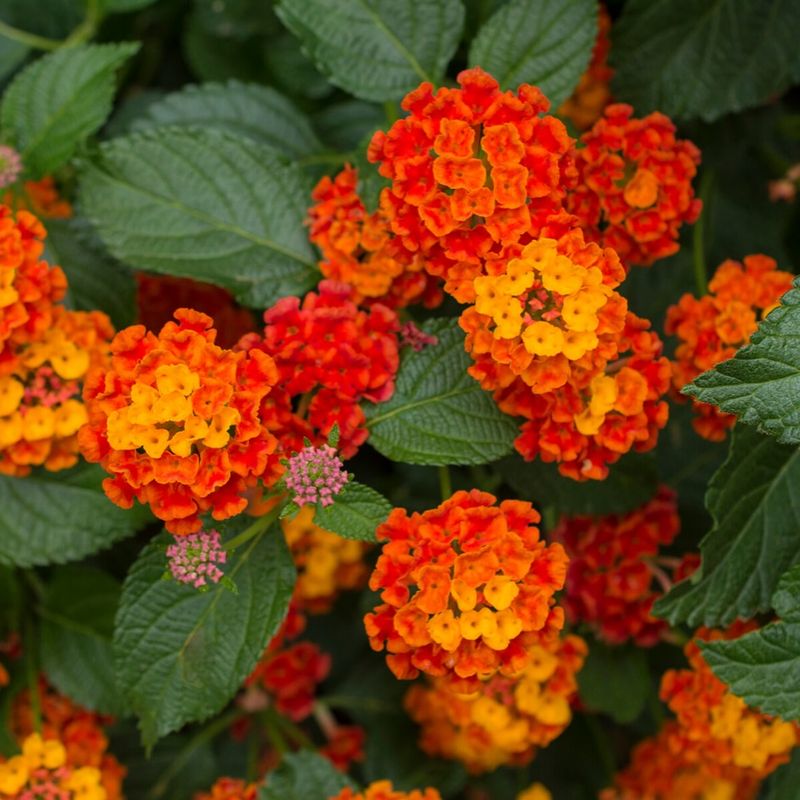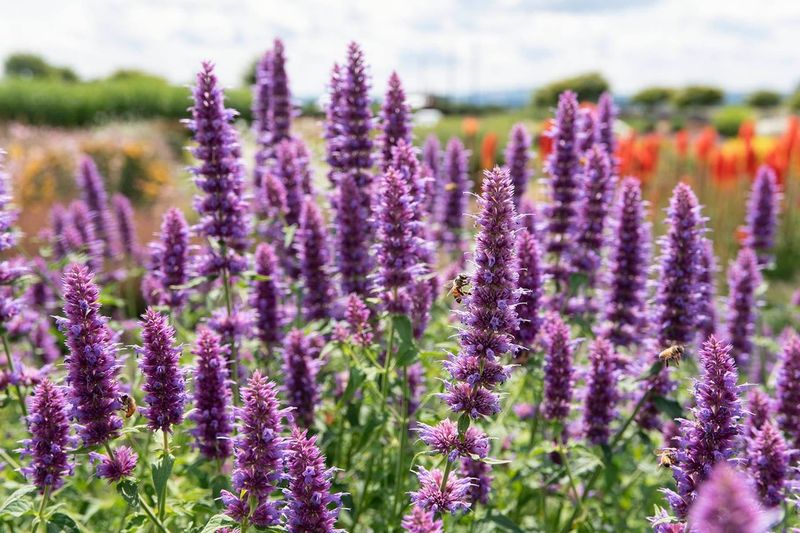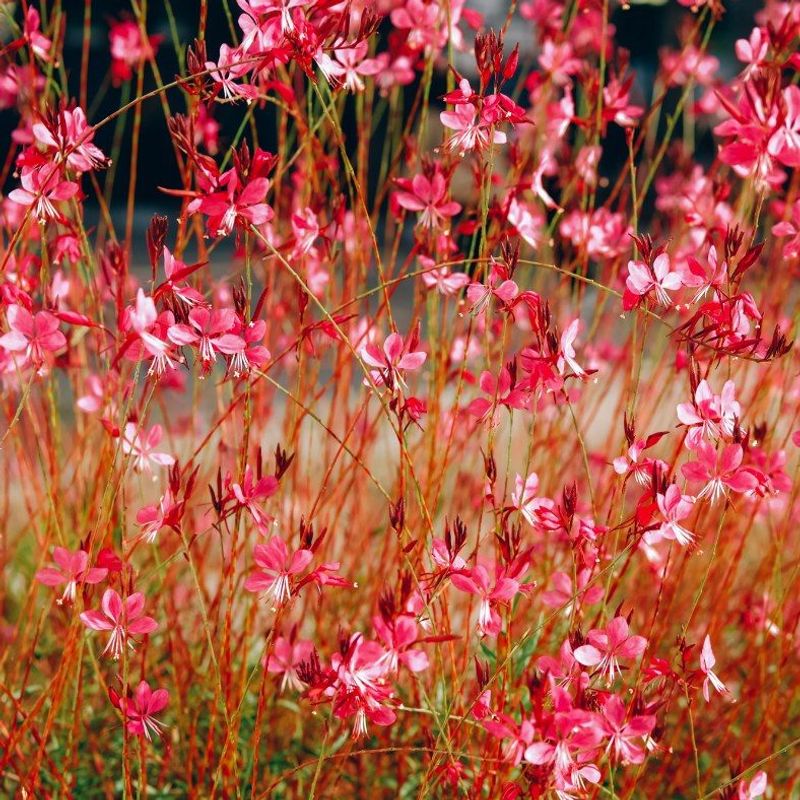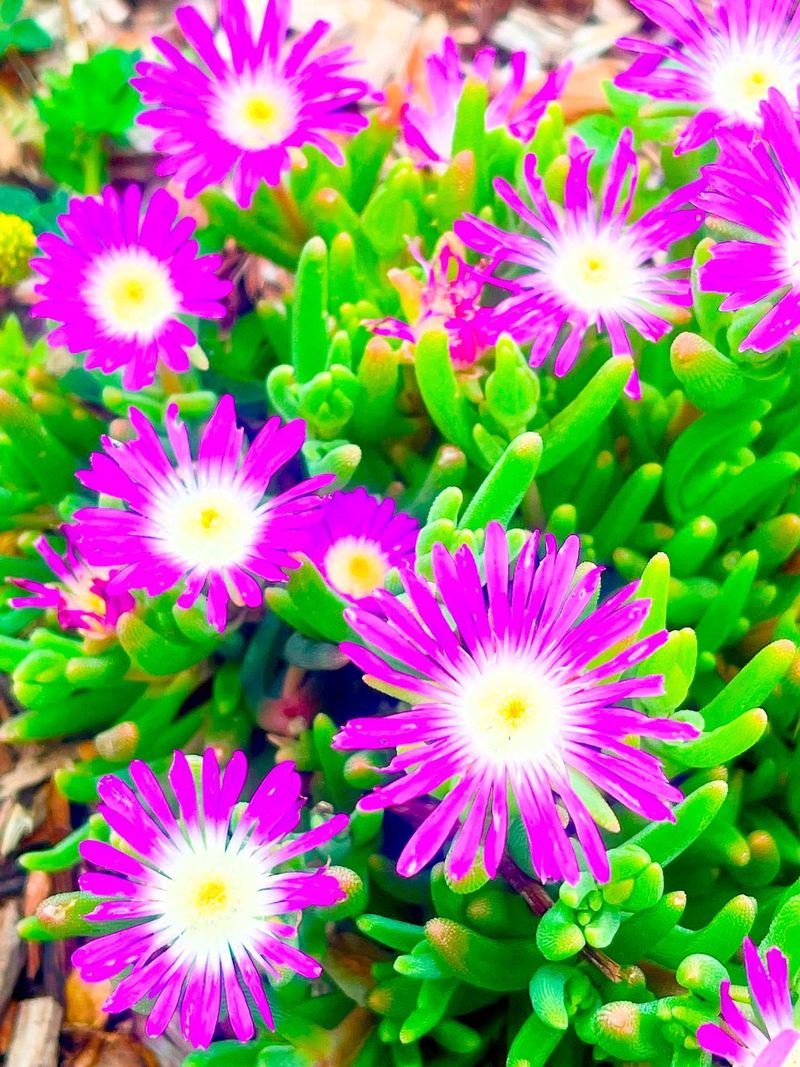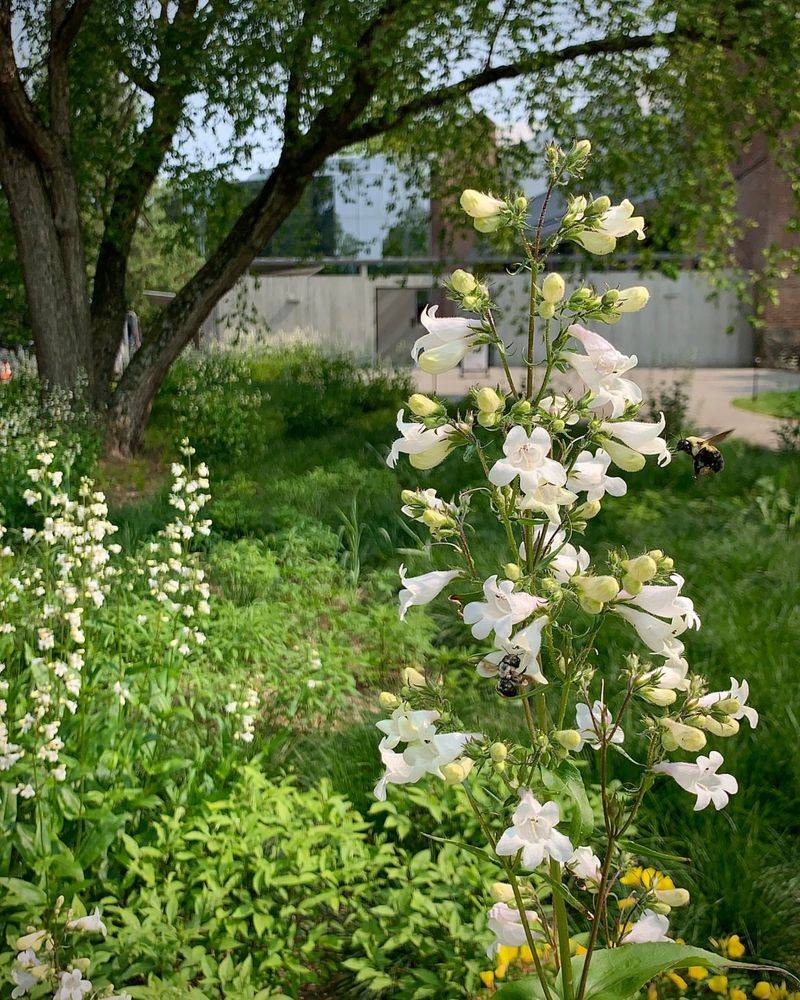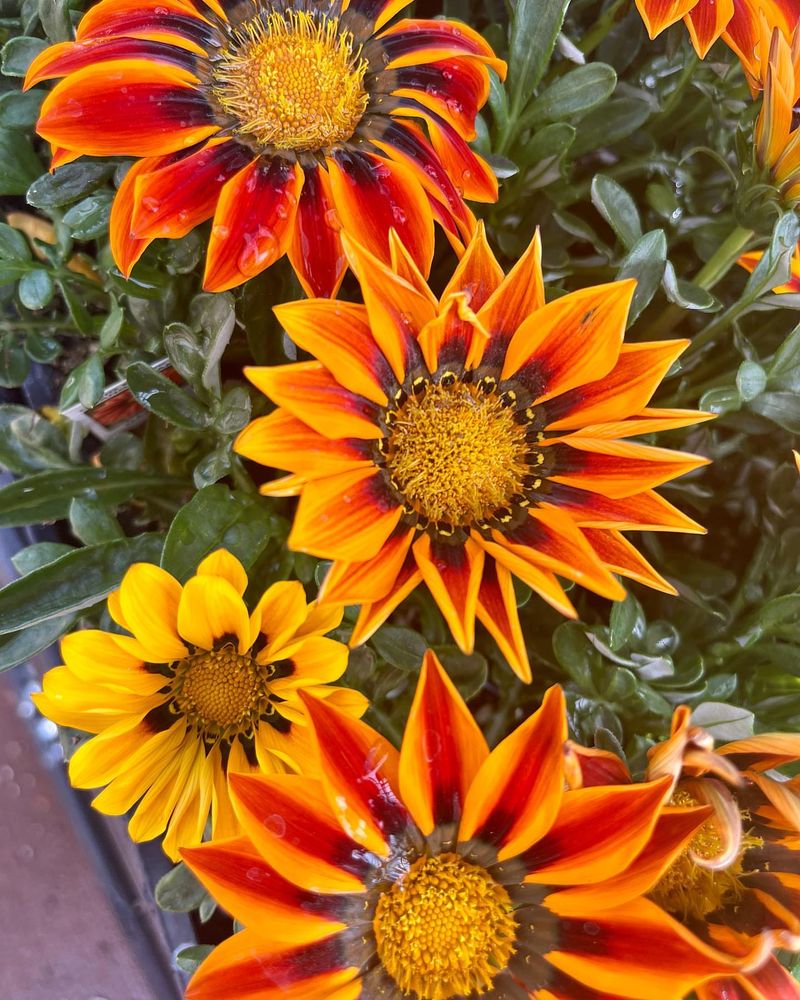Hot, dry summers don’t have to mean a lifeless garden. These 20 tough-as-nails flowers don’t just survive—they thrive with minimal watering.
Whether you live in a drought-prone region or just want to save on the hose, these bold bloomers bring vibrant color without constant care.
1. Lavender
Fragrant purple spikes make lavender a garden superstar in dry conditions. Native to the Mediterranean region, these aromatic perennials actually prefer poor soil and minimal watering once established.
Their silvery-gray foliage helps reflect sunlight and conserve moisture, while deep roots seek water far below the surface. Butterflies adore them, and you’ll love their calming scent that fills the summer air.
2. Blanket Flower (Gaillardia)
Bold and cheerful, blanket flowers bring fiery colors to water-wise gardens. Their daisy-like blooms in red, orange, and yellow combinations create a sunset effect that lasts from early summer until frost.
Prairie natives by origin, they’ve evolved to handle heat waves and dry spells with remarkable resilience. Once their roots settle in, they practically thrive on neglect. Pollinators flock to these sturdy perennials, making them ecological champions too.
3. Russian Sage
Clouds of tiny lavender-blue flowers hover above silvery stems, creating a dreamy effect in water-thrifty landscapes. Russian sage stands tall through summer’s worst heat, unfazed by scorching temperatures that wilt lesser plants.
Not actually a true sage but a distant relative, this perennial develops woody stems that help it survive drought conditions. The aromatic foliage naturally repels deer and rabbits, adding another practical benefit to its ethereal beauty.
4. Yarrow
Flat-topped flower clusters in shades from white to yellow to deep rose crown this ancient herb. Yarrow’s feathery, fern-like foliage stays attractive even during extended dry periods, making it a reliable garden performer.
Historically used for wound healing, today’s gardeners prize yarrow for its drought defiance and long-lasting blooms. The flowers dry beautifully for arrangements, extending their usefulness beyond the garden. Butterflies and beneficial insects gather around these blooms all summer long.
5. Sedum (Stonecrop)
Succulent leaves store water like living reservoirs, allowing sedums to laugh in the face of drought. Their fleshy foliage comes in an array of forms – from ground-hugging carpets to upright clumps topped with starry flower clusters.
Late summer brings showy blooms in pink, red, or yellow that attract butterflies and bees. Even in the driest gardens, these plants maintain their good looks with virtually no supplemental water. Winter interest extends their appeal, as many varieties retain attractive seed heads long after flowering.
6. Coneflower (Echinacea)
Prairie-tough and pollinator-friendly, coneflowers bring months of colorful blooms to water-conscious gardens. Their distinctive raised centers surrounded by drooping petals create an unmistakable silhouette against summer skies.
Beyond their beauty, these native perennials boast impressive drought tolerance once established. Modern breeding has expanded the color palette far beyond the original purple, now including white, yellow, orange, and even green flowering varieties. Goldfinches adore their seedheads, providing winter garden activity.
7. Globe Thistle (Echinops)
Perfectly round, steel-blue flower heads float above spiny, silver-gray foliage like planets in a water-wise universe. Globe thistles command attention in any garden, yet demand almost nothing in return – especially not extra watering.
Their architectural qualities make them standouts in both fresh and dried arrangements. Bees absolutely cannot resist these metallic blue spheres, buzzing excitedly around them throughout summer. Despite their prickly appearance, they’re surprisingly easy to grow and maintain in almost any soil.
8. Butterfly Bush (Buddleia)
Long, fragrant flower spikes act like butterfly magnets in the summer garden while requiring minimal irrigation. Once established, butterfly bushes develop deep root systems that help them find water far below the soil surface.
Available in purple, pink, white, and even bi-colors, these shrubby plants bloom continuously from midsummer until frost. Deadheading spent flowers encourages even more blooms. Their honey-sweet fragrance drifts through the garden on warm afternoons, attracting hummingbirds along with countless butterflies.
9. Black-Eyed Susan (Rudbeckia)
Golden petals radiate around dark centers, creating sunshine even during the driest summer days. These native wildflowers have evolved to handle challenging conditions, making them perfect for low-water gardens.
Their cheerful blooms last for weeks, brightening up borders and meadow plantings from midsummer through early fall. Seeds that follow the flowers attract goldfinches and other birds. Remarkably disease-resistant, black-eyed Susans require almost no maintenance beyond occasional deadheading to encourage more blooms.
10. Lamb’s Ear (Stachys)
Velvety silver leaves feel as soft as their namesake, creating textural interest in water-thrifty gardens. Their fuzzy coating serves a practical purpose – reflecting sunlight and trapping moisture near the leaf surface, perfect adaptations for dry conditions.
Pink-purple flower spikes rise above the foliage in early summer, attracting bees and butterflies. Children especially love touching the irresistibly soft foliage. Lamb’s ear forms attractive ground-covering mats that help suppress weeds while requiring almost no supplemental water once established.
11. California Poppy
Silky orange cups open to the sun and close at night, bringing desert magic to water-wise gardens. California poppies have evolved in some of America’s driest regions, making them incredibly drought-tolerant.
Their finely cut, blue-green foliage stays attractive even during heat waves. Self-seeding readily, they’ll create drifts of color year after year with zero effort. Beyond the traditional orange, newer varieties offer cream, yellow, pink, and even red blooms, all with the same tough constitution.
12. Portulaca (Moss Rose)
Succulent stems and leaves help these colorful bloomers laugh at drought while producing a non-stop flower show. Their rose-like blossoms in vibrant pinks, yellows, oranges, and whites open in sunshine and close at night or on cloudy days.
Perfect for hanging baskets, rock gardens, or as ground cover, portulaca spreads to form a living carpet just 4-6 inches tall. The flowers attract butterflies and pollinators throughout the hottest months. Their ability to store water in fleshy tissues makes them virtually indestructible during dry spells.
13. Verbena
Clusters of tiny, star-shaped flowers create blocks of color that last from spring until frost with almost no water needed. Verbenas have earned their reputation as some of the toughest flowering plants for hot, dry conditions.
Low-growing varieties make excellent ground covers, while taller types add height to borders. Butterflies and hummingbirds flock to the nectar-rich blooms available in purple, blue, pink, red and white. Their sprawling habit helps shade the soil, further conserving moisture in drought-prone gardens.
14. Lantana
Multi-colored flower clusters change shades as they age, creating a kaleidoscope effect throughout the summer heat. Lantana laughs at triple-digit temperatures that would wilt most other plants.
Originally from tropical America, these woody perennials have adapted to thrive in hot, dry conditions. Their aromatic foliage naturally repels deer and rabbits. Butterflies can’t resist the nectar-rich blooms that keep coming without pause from late spring until the first frost.
15. Salvia (Sage)
Spikes of tubular flowers in jewel tones attract hummingbirds while requiring minimal irrigation. The large salvia family includes dozens of drought-defying species, from compact borders to towering background plants.
Aromatic foliage adds sensory appeal, releasing a pleasant scent when brushed against. Many varieties bloom continuously from early summer through fall if deadheaded occasionally. Their Mediterranean origins explain their exceptional ability to thrive in hot, dry conditions where other flowers struggle.
16. Agastache (Hyssop)
Licorice-scented foliage topped with colorful flower spikes creates a sensory treat in water-thrifty gardens. Hummingbirds zoom straight to these nectar-rich blooms that appear in lavender, orange, pink, or blue depending on the variety.
Native to arid regions of North America, agastache has evolved to handle poor soil and minimal water with ease. The aromatic leaves release their anise-like fragrance when brushed against. Remarkably long-blooming, they provide color from midsummer until frost with virtually no supplemental irrigation.
17. Gaura (Wandflower)
Dancing butterfly-like blooms on wiry stems create movement and lightness in water-wise gardens. Gaura’s airy nature belies its ironclad toughness – these Texas natives laugh at heat and drought that would kill lesser plants.
White or pink flowers open sequentially along tall stems, creating a long-lasting display from early summer through fall. Their deep taproot helps them find water far below the surface. Deer typically avoid them, adding to their carefree nature in challenging garden conditions.
18. Ice Plant
Dazzling daisy-like flowers in electric colors cover succulent mats that thrive in brutal heat. Ice plants earned their curious name from the glistening cells on their leaves that sparkle like ice crystals in sunlight.
These water-storing leaves enable them to survive extended drought with ease. Low-growing and spreading, they make excellent ground covers for slopes and edges. The vibrant magenta, orange, yellow or purple blooms open in sunshine, creating carpets of color in the most challenging garden spots.
19. Penstemon (Beardtongue)
Bell-shaped blooms line tall stems, creating vertical interest in gardens where water is scarce. Native to North America’s most challenging growing regions, penstemons have naturally adapted to thrive with minimal moisture.
Available in a rainbow of colors from white to pink to deepest purple, these perennials attract hummingbirds and beneficial insects to the garden. Their semi-evergreen foliage often maintains good looks even through winter. Cutting back spent flower stalks encourages additional blooming rounds through the summer.
20. Gazania
Jewel-toned blooms with striking centers open in sunshine and close at night, conserving energy during drought. Their leathery, sometimes silvery foliage helps reflect heat and reduce water loss in hot conditions.
South African by origin, gazanias have evolved to handle poor soil and minimal rainfall. Low-growing and spreading, they make excellent ground covers for challenging spots. The daisy-like flowers come in brilliant oranges, yellows, pinks and whites, often with contrasting stripes or rings for added visual punch.

